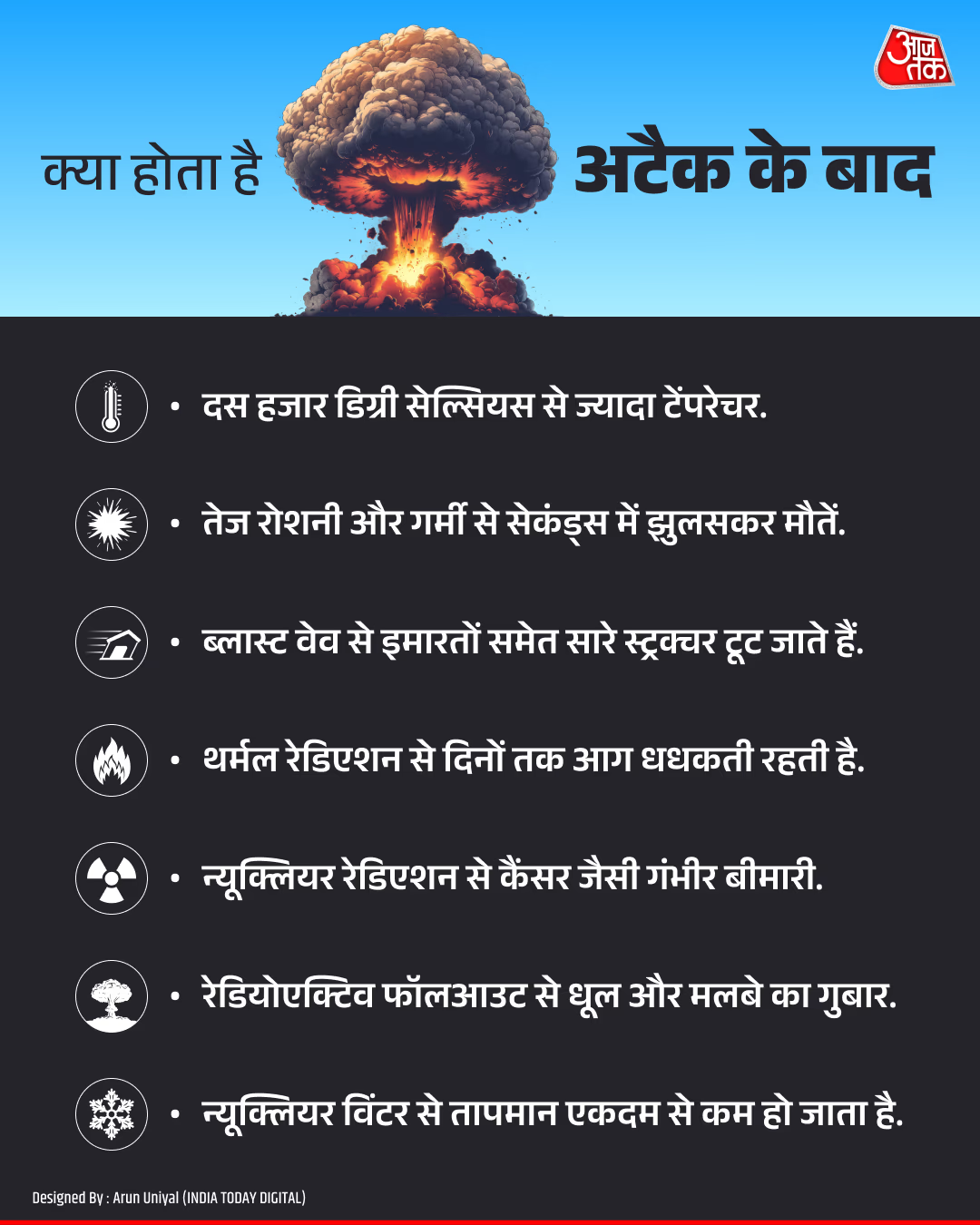In the Delhi-NCR region, several companies are selling underground CBRN bunkers - designed to shield against chemical, biological, radiological, and nuclear threats. Notably, some real estate projects in Delhi have integrated bunkers beneath buildings. Prices range from approximately 12 million to hundreds of millions. Despite apocalyptic scenarios, these setups promise safety for predetermined durations. These confidential operations offer perks, including a safe room. 'It's a room designed to protect people from theft or mob attacks. Such rooms are popular among celebrities and politicians,' my source reveals. Despite this, our quest is for nuclear bunkers. How, where, and at what cost can we secure one? A specific company caught our attention during this pursuit. My source adds, 'Their operations are highly secretive; try inquiring.' It was as predicted. The company remained resilient in its secrecy, proclaiming, 'We operate privately, catering exclusively to select clients, prioritizing their safety over publicity.' Eventually, we communicated extensively via email. The bunkers, akin to hotel rooms, come in various sizes. Higher the premium facilities, the steeper the price. Costs vary based on the number of occupants seeking shelter.

Source: aajtak
Basic rooms of standard size accommodate two adults and a child for a month; providing space for storage of food and water. A category called 'Triumph' offers ready homes to be 'fitted' underground, accommodating eight people for nearly three hundred days. The most premium shelters are expansive, akin to luxurious mansions, spreading over three thousand square feet. These can comfortably house 15 or more people. With almost twice the storage, they contain enough food, water, and electricity to last a year to three years. Should you desire fresh produce amidst declining supplies, don't worry - there are provisions.
Within the bunker resides a hydroponic room, where instead of soil, plants grow in water. With external dangers, prolonged wars, or devastating global warming, the inhabitants can sustain themselves. There's also a weapons room. If a fight is inevitable and venturing outside becomes necessary, the company ensures inhabitants don’t step out without arms. Essentially, it equips one to restart the world post-apocalypse. The company we've communicated with sold its first bunker in 2021.
That was the time of COVID when people succumbed like flies. Clients emerged from across the country, driven by fears of biological attacks. Over the past three years, demand for CBRN (chemical, biological, radiological, nuclear) shelters has significantly increased.

Source: aajtak
Are the bunkers for civilians made like those for the army?
No, CBRN shelters differ greatly from military bunkers, which are deeply grounded. These are not so deep. If a bomb directly hits the bunker, its survival is unlikely.
Why build such bunkers then?
No nation would waste expertly crafted bombs on civilians! Their real targets are leadership or military. Our bunkers are meant to provide safety until threats subside.
Cost?
In India, these start at 12 million INR for civilians, with additional expenses. However, we wouldn't recommend it as they are too small to be useful!
Communications with companies are formal yet urgent, making you wish to purchase a nuclear bunker mid-discussion.
What's the market price for standard bunkers?
We've made numerous calls, linking one contact to another, eventually connecting with a manufacturer. They say, 'We have made containers but not nuclear bunkers. If you get us a supplier, we will make a top-notch container.' While networking through calls, we found a distributor who offered bomb-proof sheets, with the catch being specification submission first.
What does that entail?
Mam, whom do you want protection from? Hand grenades or something heavier. The material cost increases with demand, and fewer joints are preferred, else they won't suffice.
If we wanted to build a bunker for nuclear weapon protection?
A thickness of at least 16mm is necessary. Per square foot would become quite expensive.
How expensive?
Extremely. I can't give a quote right off. Send a specification, and we'll provide an estimate.
Similarly to fashion or skincare markets, this one too is competitive. On another call, a supplier undercuts the previous, '16mm is excessive; we manage with 5mm. Besides, no one's attacking Delhi. They're making a big deal and looting. Stick with 5mm.' We brokered a slightly cheaper deal with a bullet-proof wall supplier and a safe house manufacturer. Costs for a container accommodating about 24 people hovered around 25 million. Further exploration might yield cheaper options, but that's where we paused. We finalized the specifications: space for 15 people for a month. Suggestive ideas flowed. The manufacturer proposed a dormitory system instead of bunk beds, optimizing space. Thermocol insulation on the inside, alongside additional amenities, may incur higher costs. Permits for excavation and other formalities, plus electricity and water, must be managed too.

Source: aajtak
Yes. We wish to minimize people involvement, ensuring discreet operations.
Expect costs to reach approximately 40 million.
That's too high. You could buy two nice homes in Delhi for that. I lose patience. But you don’t need homes. Bombardments will obliterate them. Your demands are significant. This involves steel and concrete materials, hiring engineers, and acquiring permits. It’s an elaborate process. The almost finalized suppliers guaranteed themselves, 'We handle government projects. Individuals rarely make such requests, usually safe rooms are in demand. Examine your options. This work requires time. It’s not instant noodles.’ Their tone blends casual indifference with the weight of a hammer, suggesting they have ample clientele regardless of our response.

Source: aajtak
A retired IPS from Delhi comments, 'I doubt such bunkers’ effectiveness. There’s no way to test them. Nobody will come to claim after demise. They sell without accountability. Only VVIPs in Delhi or across the country possess such bunkers.
What about the general public?
In my years of service, I haven’t encountered anything for the public. Underground metro stations are an option, but population pressure could trigger chaos. A nuclear assault is even dire, with shockwaves and radiation posing significant threats. Nuclear needs special steel-concrete bunkers, buried underground.
Obtaining these ‘special’ bunkers through companies costs astronomically. Searching open markets invites coordination chaos. Then…! Real estate capitalizes on this vulnerability among affluent yet non-VVIP individuals. Initiatives are underway in Delhi.
One five-star hotel group develops luxury flats featuring an underground nuclear bunker among its numerous amenities. We schedule an appointment as potential clients. In the midst of Delhi, where even compact flats cost millions, a project takes shape. Upon arrival, a representative greets us warmly amidst serene interiors, curated to immediately erase the chagrin of not being on the VVIP list. As we observe luxurious décor, we're halted to don automated socks. Suited attendants, exclusive to each client, offer refreshment as they showcase the building’s ongoing development on a large screen. Trying to be a diligent client, I pose some questions, eventually steering towards the nuclear basement.
How did your company conceive this idea?
Madam, considering the present climate, pollution and wars are becoming commonplace. Ensuring safety amidst threats led to the underground shelter concept. Clients now prioritize safety over luxury, compelling us to combine both.

Source: aajtak
The screen displays the shelter's design.
How many can reside here?
Our building accommodates approximately 120 flats. Considering an average of four members per home, around five hundred people can stay below.
And the storage, electricity, water?
All needs are catered for, ensuring survival and comfort. Who will ensure adequate food and other essentials in storage? Our group will handle it like a hotel checklist. Regular checks will be standard for both the entire building and the nuclear basement, free of charge for ten years.
Nuclear bunkers are typically deep underground!
Yes, our engineers thoroughly studied this. They assisted in Burj Khalifa’s construction and dealt with significant Dubai projects.
But approximately how deep underground?
At minus level 4. Each of our floors is around 4 meters tall, do the math yourself,’ explains the suited representative meticulously. Can I have a look underground? Not presently, the ground is 'muddy' due to construction, preventing entry. Wearing a helmet and toe-gloves, we explore minus one level. It's genuinely swampy. Despite carefully stepping over steel rods, the mud clings to my socks detached by now. A floor engineer stops us eventually. 'Beyond this is inaccessible; minus 4 won't be seen until completion.' Nearby, EWS apartments rise adjacent to the luxury development. As we inquire, an attendant assures, 'Don’t worry, madam, they’ll be unobtrusive. A 20-foot wall and greenery will separate them.' His manicured hand firmly delineates luxury from the mundane.




